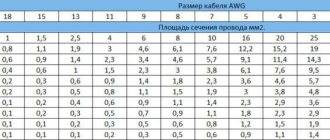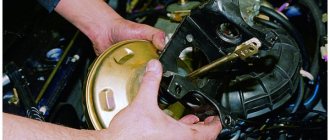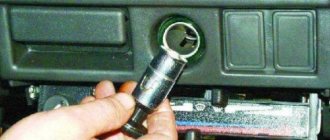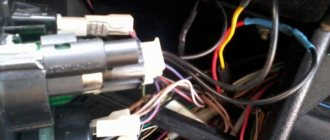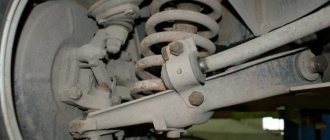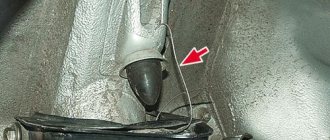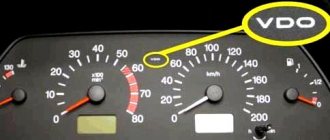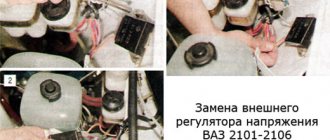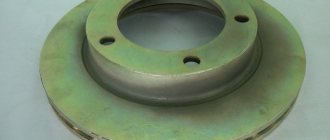MANUAL 2 channel power amplifier Mystery MR 2.75
Main features: 2-channel class AB power amplifier, MOSFET technology Rated power (4 Ohms) 75 W x 2 channels Rated power (2 Ohms) 120 W x 2 channels Frequency range 20 Hz - 22 kHz Low frequency level adjustment range from 0 up to +12 dB at 45 Hz Low-pass filter 50 - 250 Hz / 18 dB per octave High-pass filter 50 - 250 Hz / 18 dB per octave Input impedance 20 kOhm Dimensions (L x W x H) 200 x 263 x 51 mm
1. RCA input Used to connect the amplifier to the line output of the head unit. The RCA output is used to connect a second amplifier. 2. Low frequency level control (BASS BOOST) This control is designed to smoothly adjust the gain boost at a frequency of 45 Hz within the range from 0 to +12 dB. 3. High-pass filter When connecting speaker systems smaller than 6x9 inches to the amplifier, it is recommended to set the crossover switch (6) to the H P position and set the HIGH PASS control to a frequency value of 65 Hz or higher to avoid damage to speaker systems by low-frequency signals. 4. Low Pass Filter When connecting a subwoofer to an amplifier, set the crossover switch (6) to L P. Set the crossover frequency to 100 Hz or lower, otherwise the speakers may be damaged. 5. Input signal adjustment (Level) This knob (5) is designed to adjust the amplifier input signal level. For correct settings, first move the control (5) to the MIN position, and the head unit volume control to the 3/4 position from the maximum (BASS and TREBLE controls in the zero position). Then slowly turn the Level knob (5) towards the MAX position. Note: If the sound becomes distorted, turn the control back a little. 6. Crossover switch The crossover switch allows you to select the speaker output mode: LP (low-pass filter), HP (high-pass filter) or OFF (filter off). 7-8. POWER and PROTECTION indicators These indicators show the operating modes of the amplifier: POWER - the amplifier is turned on and operating normally, PROTECTION - the amplifier has turned off due to overload or overheating. 9. Fuses Fuses are designed to protect the amplifier from overloads. Make sure you use the correct fuses. 10. +12V terminal The terminals are designed to supply (+) power to the amplifier. Connect to the (+) terminal of the car battery using a cable with a cross-section of up to 4 Ga. Install a fuse in this circuit near the battery. Note: This connection is made last when installing the amplifier (to prevent damage). 11. REMOTE INPUT (RMT) terminal The terminal is designed to turn on/off the amplifier by applying (+) 12V to this terminal. Typically, this signal appears at the output of a switched-on head unit designed to control an active antenna or other equipment. If there is no such signal, connect this terminal to the ACC circuit of the vehicle ignition switch. 12. GROUND (GND) terminal This terminal is designed to supply (-) power to the amplifier. Connect directly to the car body using a cable with a cross-section of up to 4 Ga. Note: This connection is made first when installing the amplifier. 13. Terminals for connecting speaker systems Terminals are designed for connecting one or more speaker systems. Follow the "2/1 channel (two or one channel)" connection diagram in the instruction manual.
Stereo mode (2-channel connection)
Bridge connection (single channel)
Technical characteristics of Mystery MR 2.75 Power at 4 Ohm load. 75 W x 2 channels Power at 2 Ohm load. 120 W x 2 channels Bridged power into a 4 ohm load. 225 W x 1 channel Frequency range. 20 Hz - 22 kHz Signal to noise ratio. > 90 dB Harmonic distortion factor. 60 dB Low Pass Filter. 50 Hz - 250 Hz / 18 dB per octave High Pass Filter. 50 Hz - 250 Hz / 18 dB per octave Bass level adjustment range. 0 to +12 dB at 45 Hz Input impedance . 20 kOhm
Good nutrition is the key to success
The amplifier connection procedure begins with the power wires. Wiring is the most important element of a car audio system; the volume and sound quality depend on it. Amplifiers need a stable power supply, otherwise the power will not be enough and the sound will become distorted. To understand why you need to pay attention to the quality of wiring and how it affects the sound reproduced by a loudspeaker, you need to know what a music signal is.
Some suggest that it represents a sine wave, however, the musical sinhala is characterized by a large difference between the normal and peak value. If sharp signal bursts are not important for car speakers, then in the case of an amplifier the situation is completely different. If the signal exceeds the permissible power for even a second (or even a millisecond), then these “anomalies” will be audible even to those who cannot boast of a good ear for music.
If the car amplifier is connected properly, the signal will flow through the wires undistorted. Carelessly done work or incorrectly selected wire cross-section will result in the sound being more compressed, rough and sluggish. In some cases, wheezing may also be clearly audible.
How to choose a wire cross-section?
Wire is the most common metal with a certain level of resistance. The thicker the wire, the lower the resistance of the wire. To avoid sound distortion during large voltage fluctuations (for example, when playing powerful bass), you must install the correct gauge wire.
It is worth noting that the cross-section of the positive cable should not be larger than the negative one (the length does not matter).
An amplifier is considered to be a rather electrically intensive device. For its effective operation, high-quality grounding is necessary so that it is possible to receive the necessary energy from the battery. To choose the correct wire cross-section, you need to make some calculations. First, look at the instructions for the amplifier (or directly at the box from the manufacturer, if there is no documentation, use the Internet) and find the rated power value (RMS) there. Rated power is the signal power an amplifier can deliver over an extended period of time to one channel of 4 ohms.
If we consider four-channel amplifiers, they usually have a power of 40 to 150 watts per channel. Let's say that the amplifier you purchased produces 80 watts of power. As a result of simple mathematical operations, we find out that the total power of the amplifier is 320 W. Those. How did we calculate this? It’s very simple to multiply the rated power by the number of channels. If we have a two-channel amplifier with a rated power (RMS) of 60 W, then the total will be 120 W.
After you calculate the power, it is advisable to also determine the length of the wire from the battery to your amplifier and you can safely use the table to select the required wire cross-section. How to use the table? On the left side the power of your amplifier is indicated, on the right you select the length of the wire, go up and find out what cross-section you need.
The table shows the cross-sections of copper wires, remember that a large number of sold wires are made of aluminum coated with copper, these wires are not durable and have more resistance, we recommend using current copper wires.
Fuse selection
In order to secure the connection of the car amplifier, it is necessary to protect the power supply from the battery to the amplifier using a fuse. Fuses should be placed as close to the battery as possible. It is important to distinguish between a fuse that protects the device itself (whether it is an amplifier or a radio) and a fuse installed on the power wire.
Basic technical data
Mystery sub included
Mystery subwoofers have the following main characteristics:
- The speaker is small - only 1 x 200 mm.
- It can reach a power of up to 200 W, but this is its maximum value.
- The diffuser has a diagonal of 8 inches, which is due to the fact that it is made of Kevlar and Nomex.
- Equipped with a magnet weighing 425 grams. Actually, this is what determines the overall weight of the device.
- The voice coil measures 1.5 inches. It is made of aluminum material.
- The cutoff frequency can be completely adjusted. Its values range from 40 to 160 Hz.
- Can reproduce frequencies within the range of 30-200 Hz.
- It is possible to adjust the bass level using the remote control.
Note. Bass can vary from weaker to stronger. However, not every song requires too high bass.
- The body is cast, made of aluminum. This provides it with greater strength. In addition, this determines its low cost.
Mystery sub MBB
- Has a small size. At the same time, it also weighs very little.
- It's cheap.
Connecting interconnect wires and control (REM)
To lay the cable, you need to find the linear output on the radio. The linear output can be recognized by the characteristic “bells” that are located on the rear panel of the radio. The number of linear outputs differs in different radio models. Usually there are from one to three pairs. Basically they are distributed as follows: 1 pair - you can connect a subwoofer or 2 speakers (labeled as SWF) If there are 2 pairs of them, you can connect 4 speakers or a subwoofer and 2 speakers (outputs are labeled F and SW), and when there are 3 pairs of linear wires on the radio, you can connect 4 speakers and a subwoofer (F, R, SW) F This is Front i.e. front speakers, R Read rear speakers, and SW Sabwoorer I think it’s clear to everyone what that is.
The connection will require an interconnect wire, which should never be skimped on. It is prohibited to lay the interconnect cable near the power wires, as various types of noise will be heard when the engine is running. You can run the wires both under the floor mats and under the ceiling. The latter option is especially relevant for modern cars, in the interior of which there are electronic accessories that create interference.
You also need to connect the control wire (REM). As a rule, it comes with interblock wires, but it happens that it is not there, purchase it separately; it does not need to be of a large cross-section - 1 mm2 is quite enough. This wire serves as a control for turning on the amplifier, i.e. when you turn off the radio, it automatically turns on your amplifier or subwoofer. As a rule, this wire on the radio is blue with a white stripe; if it is not there, use a blue wire. It is connected to the amplifier to a terminal called REM.
Amplifier connection diagram
Connecting a two-channel and four-channel amplifier
We have combined this section because these amplifiers have a very similar connection diagram, one might even say more simply, a four-channel amplifier is two two-channel ones. We will not consider connecting a two-channel amplifier, but if you figure out how to connect a four-channel amplifier, then you will not have any problems connecting a two-channel amplifier. Most car enthusiasts choose this option for their installations, since this amplifier can connect 4 speakers, or 2 speakers and a subwoofer. Let's look at connecting a four-channel amplifier using the first and second options.
Connecting a 4-channel amplifier to a battery is recommended using a thick cable. How to choose the right power wires and connect the interconnects, we discussed all this above. Amplifier connections are usually indicated in the manufacturer's instructions. When an amplifier is connected to an acoustic system, it operates in stereo mode; in this mode, this type of amplifier can operate under a load of 4 to 2 ohms. Below is a diagram of connecting a four-channel amplifier to speakers.
Now let's look at the second option, when speakers and a subwoofer are connected to a four-channel amplifier. In this case, the amplifier operates in mono mode, it takes voltage from two channels at once, so try to select a subwoofer with a resistance of 4 ohms, this will save the amplifier from overheating and going into protection. Connecting a subwoofer will not be a problem; as a rule, the manufacturer indicates on the amplifier where to get the plus to connect the subwoofer, and where to get the minus. Take a look at the diagram of how to bridge a 4-channel amplifier.
Connecting a monoblock (Single channel amplifier)
Single-channel amplifiers are used for only one purpose - connecting to a subwoofer. A notable characteristic of amplifiers of this type is increased power. Monoblocks are also capable of operating with resistances below 4 ohms, which is called a low-impedance load. Monoblocks are classified as class D amplifiers, and they have a special filter for cutting frequencies.
Settings
After connecting the device, you need to make the sound as powerful and clear as possible. Without proper settings, the sound of the subwoofer may disappoint you.
To get a sound with clear lower and higher frequencies, you need to buy a special disc.
It is used to configure audio systems. The recorded melody allows you to hear all the errors in the operation of the device.
Listen to the melody playing in the speakers and at the same time adjust the subwoofer settings. This should be done at low volume. When the sound suits you, turn up the volume and once again make sure that the melody sounds without errors.
High-quality bass can be achieved with the right setup, but the subwoofer box also plays an important role. The case can be purchased or made independently.
- How to set up a radio
- Frame for 1 din radio
- Soundmax SM CCR3703G
- How to set up a Kenwood radio
Video on how to properly connect a four-channel and single-channel amplifier
We hope that this article helped you understand how to properly connect a car amplifier. Rate the article on a 5-point scale; if you have any comments, suggestions or you know something that is not indicated in this article, please let us know! Leave your comment below. This will help make the information on the site even more useful.
Car owners who like to listen to music loudly should definitely know how to connect a Mystery subwoofer. This device is considered one of the most popular and frequently purchased. To experience all the benefits of this technology, you need to connect it correctly and install it inside the car.
22″ (55 cm) LED TV Mystery MTV-2228LT2 black
Mystery TVs are very popular in our country, their main feature is their low cost. In order to set up twenty free digital channels on the Mystery TV, make sure that it supports the DVB-T2 broadcast format. If this format is supported, then setting up digital terrestrial channels will not be difficult and will not take much time. Soon analogue TV will be switched off throughout the country and in order not to be left without your favorite TV channels you need to tune in digital to Mystery TV. To do this, follow the instructions below.
What do you need
Before you start connecting the Mystery subwoofer, you need to find or buy several additional components in specialized stores. They will be used during work and will allow you to achieve the desired result as quickly as possible.
To connect the Mystery sub you will need the following components:
- control wire;
- fuse for power wire;
- amplifier plug;
- 2 power wires;
- reversible RCA cables.
In addition to various components, you will need some materials and tools for the job. Without them, it will be impossible to do quality work.
Are you a car driver?! Then you can take this simple test and find out. Go to test »
List of required items:
- screwdriver;
- pliers or pliers;
- knife;
- electrical insulating tape.
Easy way to connect
Connecting the Mystery active subwoofer is done in two main ways. One of them is suitable for beginners, and the other is for professionals. When choosing the best option, you should evaluate your own capabilities, as well as your ability to perform such work.
Subwoofer connection procedure:
- A place is found in the car interior where the device will be located. Experts recommend placing the subwoofer so that passengers sitting next to you do not experience inconvenience from the loud sound emanating. However, it is prohibited to install the equipment in places where it will be obscured by any object. Otherwise, the sound quality of the melodies will decrease.
- Using power cables, connect the subwoofer to a power source (battery). If it is not possible to use this option, then connect the device through the cigarette lighter.
- A fuse is installed on the positive wire. This is necessary to ensure that a sudden surge in voltage does not damage the elements of the audio system and render it inoperable.
- The connected subwoofer is connected to the radio using double-sided RCA cables (“tulips”).
Mystery subwoofer installation
Connecting the Mystery subwoofer to your car depends on where it is installed. The dimensions of most devices do not allow them to be installed inside a car, so the most convenient place to place a low-frequency speaker system would be the luggage compartment. In this case, connecting the Mystery active subwoofer will be done with long wires. In addition to the rigid fastening of the wires, it is necessary to provide for fixation of the device itself. Due to shaking and vibration, an unsecured speaker will move throughout the trunk. When the equipment is running, this can lead to breakage of power wires, short circuit and possible fire. To attach low-frequency acoustics, you can use belts or spring bars that are attached behind the back of the rear seat. If this is difficult to do, then you can screw corners to the false floor of the luggage compartment using self-tapping screws, which will securely fix the acoustics.
Connecting the Mystery MTV 200A subwoofer is done in the same way as other models of this brand. All connectors on the rear wall of the device are unified and have standard designations.
Connection via amplifier
Having understood how to connect the Mystery active subwoofer, you can perform a similar operation with a passive device. This type of work involves the use of a special amplifier, which is connected to the subwoofer. Thanks to this additional element, the volume limit will increase and the sound quality will improve.
- One end of the negative wire is connected to the GND terminal on the amplifier.
- The opposite edge of the same power cable is connected to any part of the car body.
- Contact points are carefully isolated.
- The positive wire is connected to terminal +12 located on the rear panel of the amplifier.
- A fuse is installed on the power cable.
- Find the Remote terminal on the amplifier and connect the subwoofer to it.
- Using an RCA cable, connect the amplification device to the radio.
- Check the reliability of the connection and begin setting up the acoustic equipment.
- To do this, insert a disc into it (included in the Mystery subwoofer kit) on which a test melody is recorded.
- After the sound starts, turn the volume down to minimum and begin adjusting the settings.
- As soon as the sound becomes “clear,” increase the volume and retest the device.
The Mystery subwoofer is easy to connect, so you can do the job yourself. Properly installed equipment will function smoothly and delight the car owner with high sound quality.
Active subwoofer Mystery pinout
In addition to the standard “Tulip” connectors, rectangular contact blocks are installed on the rear panel of the Mystery speakers. “HIGHINPUT” is used to send audio signal to the amplifier input from car speakers. The “POWER” connector is designed to provide power to the device. Power pinout for connecting the Mystery active subwoofer. There are six pins on the block. +12V power is supplied to the left pair of contacts. The two vertical pins are combined and soldered to the battery power cable. The same must be done with the two GND pins. The use of twists is strictly prohibited. Only careful soldering followed by insulation of the connection.
The top contact in the middle row, marked “REM,” is designed to control the power supply to the active speaker. Connecting the Mystery active subwoofer from the chip provides power to the amplifier at the same time as the car radio is turned on. To do this, the “REM” contact of the head unit is connected to a similar contact on the amplifier block. A situation may arise when it is difficult to find a connector (chip) for connecting power. It is not recommended to hang any homemade pins on the connector. The safest way is to open the device and solder the conductors directly to the board, bring them out, solder them onto the power cable from the battery and carefully insulate them.
